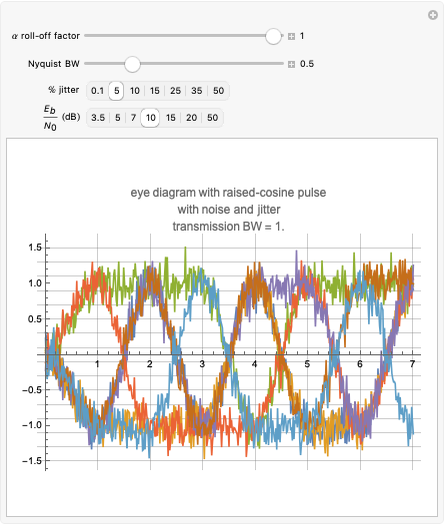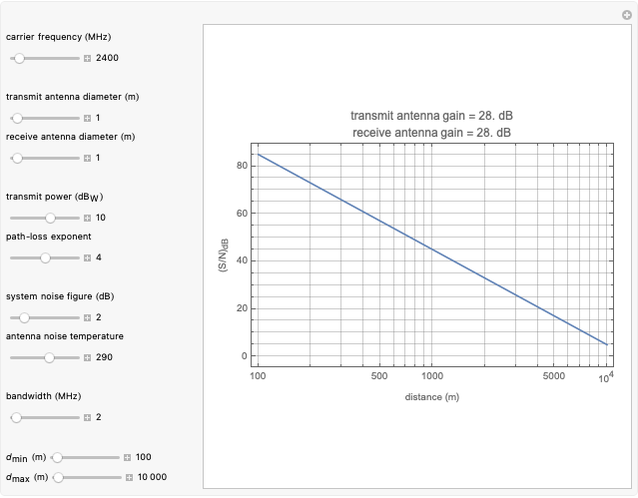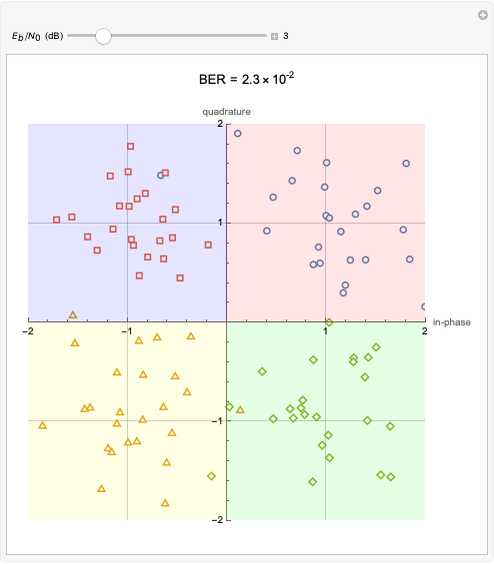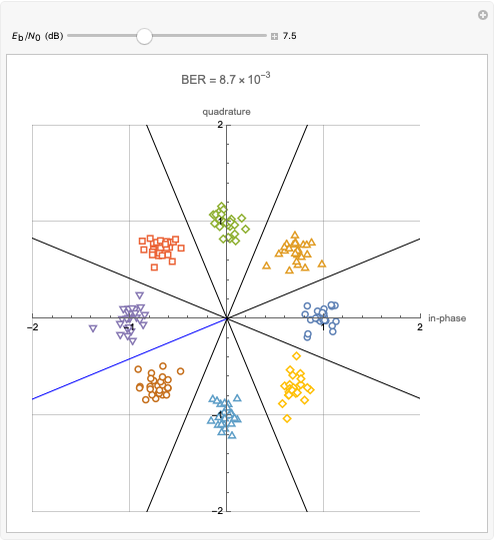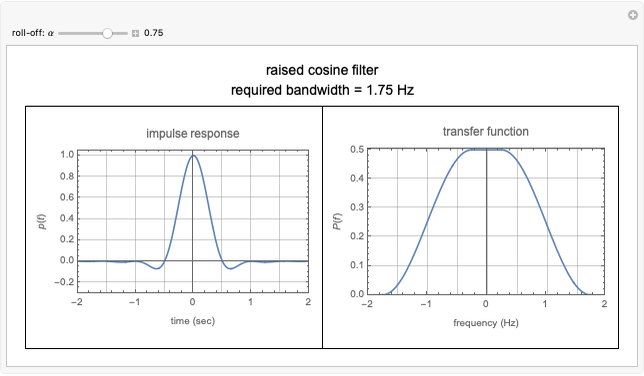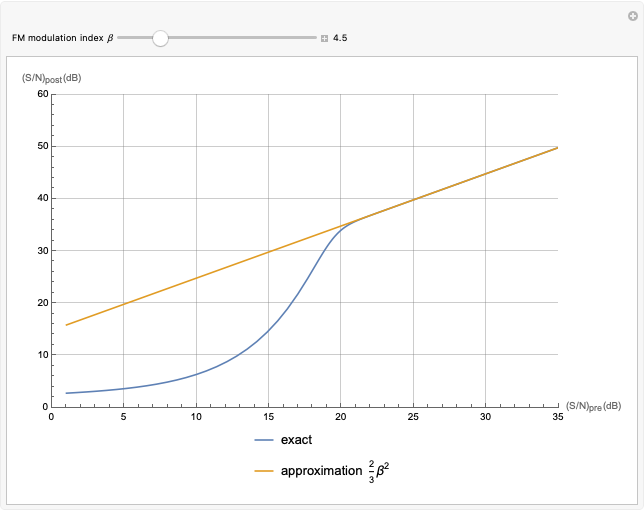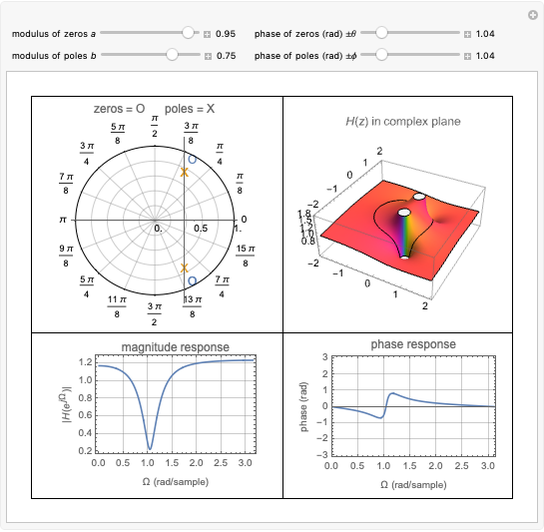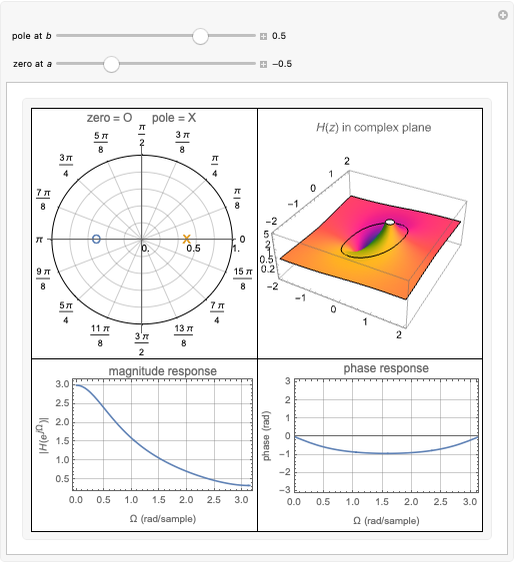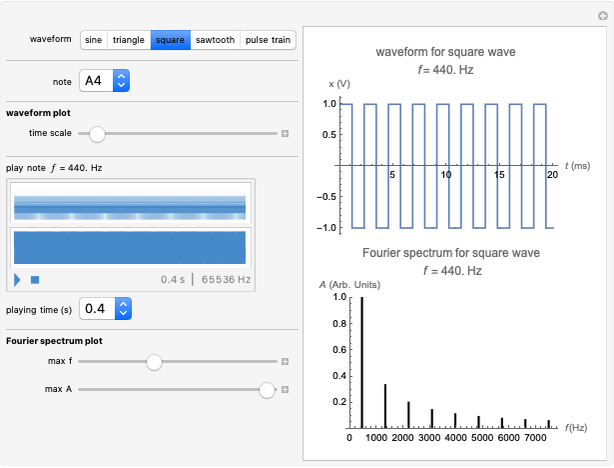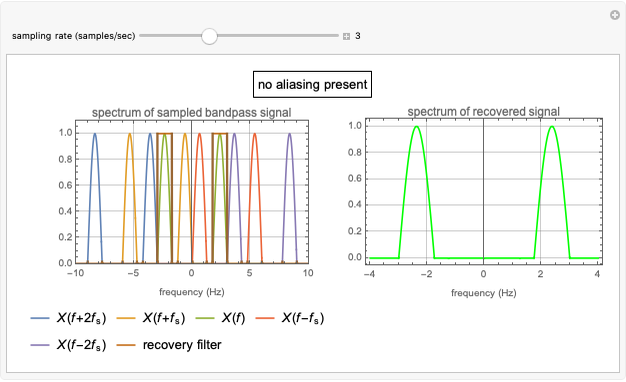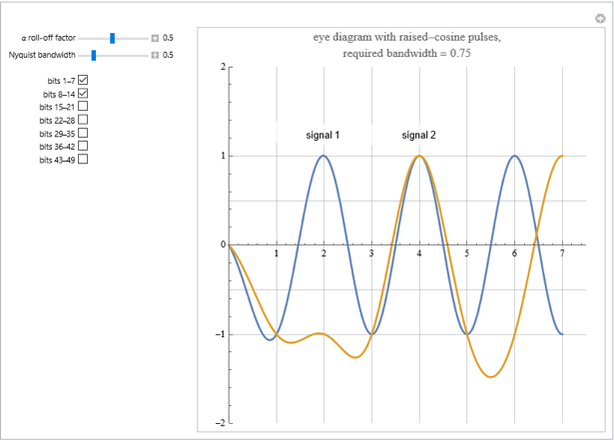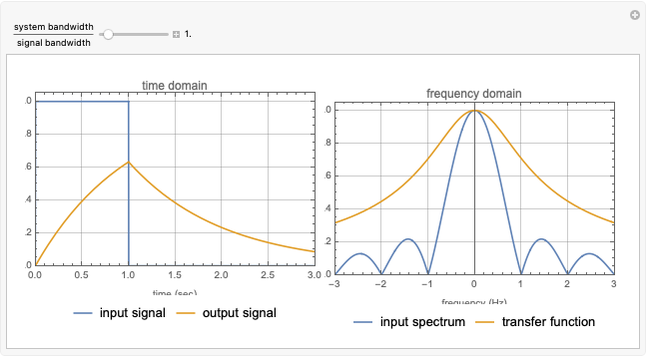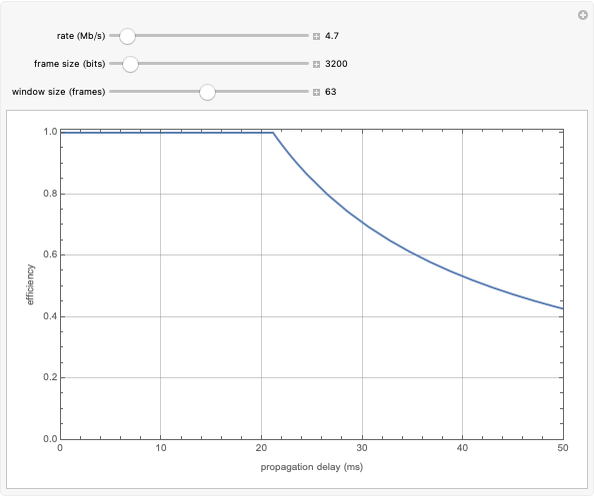Constructing an Eye Diagram

Requires a Wolfram Notebook System
Interact on desktop, mobile and cloud with the free Wolfram Player or other Wolfram Language products.
An eye diagram (or eye pattern) is a tool to graphically represent the quality of a digital signal. It provides information on the characteristics of a digital communications system, including timing error, amount of intersymbol interference and noise margin.
[more]
Contributed by: Victor S. Frost (August 25)
(University of Kansas)
Open content licensed under CC BY-NC-SA
Details
References
[1] L. W. Couch, Digital and Analog Communications Systems, 7th ed., Upper Saddle River, NJ: Pearson/Prentice Hall, 2007.
[2] S. Haykin and M. Moher, An Introduction to Analog and Digital Communications, 2nd ed., Hoboken, NJ: Wiley, 2012.
[3] V. S. Frost. "Introduction to Communication Systems: An Interactive Approach Using the Wolfram Language." University of Kansas Libraries. (Jul 5, 2023) kuscholarworks.ku.edu/bitstream/handle/1808/31779/Introduction-to-Communication-Systems-Deployed-V3.cdf?sequence=5&isAllowed=y.
Snapshots
Permanent Citation






